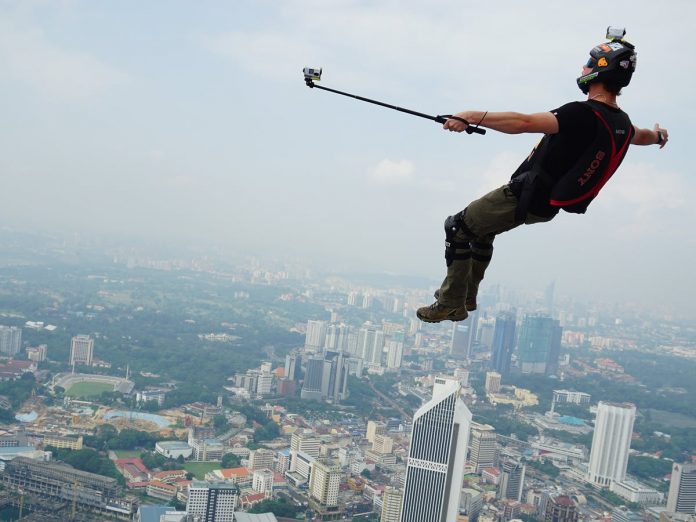Earlier this month, an Indian man was killed while trying to take a selfie next to a wounded bear. It’s actually the third selfie-related death in India since December: On two separate occasions, elephants ended up taking the lives of people trying to snap images with the mammals.
Animals don’t pose the only danger to selfie seekers. Heights have also resulted in fatalities. A Polish tourist in Seville, Spain fell off a bridge and died attempting to take a selfie. And a Cessna pilot lost control of his plane – killing himself and his passengers – while trying to take a selfie in 2014.
In 2015, Russian authorities even launched a campaign warning that “A cool selfie could cost you your life.”
The reason? Police estimated nearly 100 Russians had died or suffered injuries from attempting to take “daredevil” selfies, or photos of themselves in dangerous situations. Examples included a woman wounded by a gunshot (she survived), two men blown up holding grenades (they did not), and people taking pics on top of moving trains.
People who frequently post selfies are often targets for accusations of narcissism and tastelessness.
But what’s really going on here? What is it about the self-portrait that’s so resonant as a form of communication? And why, psychologically, might someone feel so compelled to snap the perfect selfie that they’d risk their life, or the lives of others?
While there are no definitive answers, as a psychologist I find these questions – and this unique 21st-century phenomenon – worth exploring further.
A brief history of the selfie
Robert Cornelius, an early American photographer, has been credited with taking the first selfie: in 1839, Cornelius, using one of the earliest cameras, set up his camera and ran into the shot.
The broader availability of point-and-shoot cameras in the 20th century led to more self-portraits, with many using the (still) popular method of snapping a photograph in front of a mirror.
Selfie technology took a giant leap forward with the invention of the camera phone. Then, of course, there was the introduction of the selfie stick. For a brief moment the stick was celebrated: Time named it one of the 25 best inventions of 2014. But critics quickly dubbed it the Naricisstick and the sticks are now banned in many museums and parks, including Walt Disney Resort.
Despite the criticism directed at selfies, their popularity is only growing.
Conclusive numbers seem lacking, with estimates of daily selfie posts ranging from one million to as high as 93 million on Android devices alone.
Whatever the true number, a Pew survey from 2014 suggests the selfie craze skews young. While 55 percent of millennials reported sharing a selfie on a social site, only 33 percent of the silent generation (those born between 1920 and 1945) even knew what a selfie was.
A British report from 2016 also suggests younger women are more active participants in selfie-taking, spending up to five hours a week on self-portraits. The biggest reason for doing so? Looking good. But other reasons included making others jealous and making cheating partners regret their infidelities.
Confidence booster or instrument of narcissism?
Some do see selfies as a positive development.
Psychology professor Pamela Rutledge believes they celebrate “regular people.” And UCLA psychologist Andrea Letamendi believes that selfies “allow young adults to express their mood states and share important experiences.”







